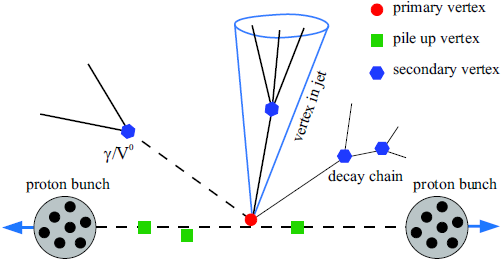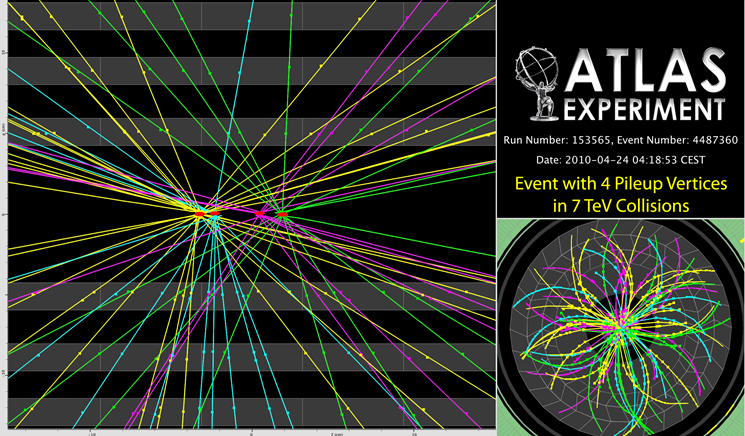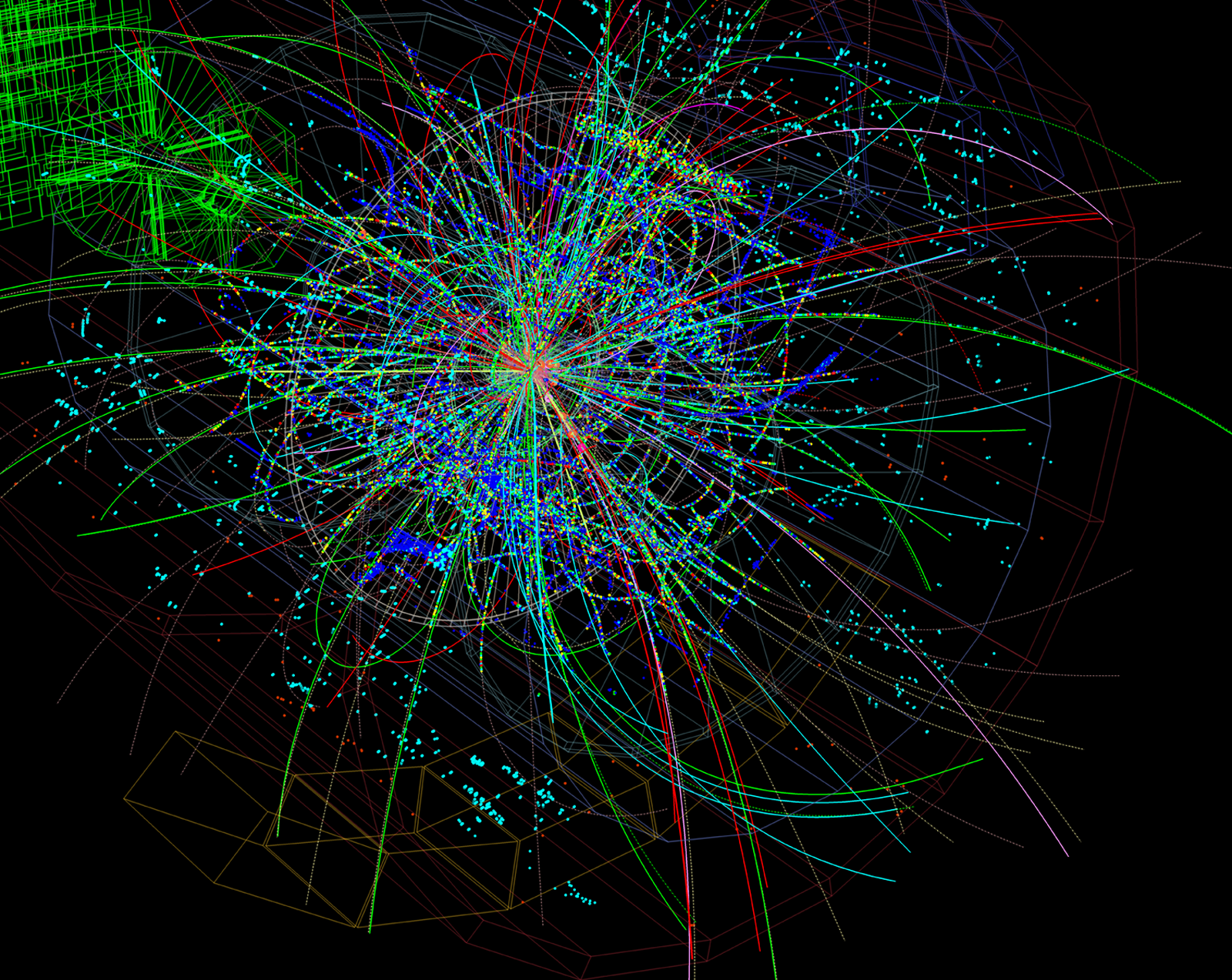Taking a closer look at LHC
When the bunches intersect at the interaction points, hundreds of billions of protons cross each other, resulting in many (almost) simultaneous collisions (vertices). This phenomenon is called pile-up.
From these primary vertices secondary vertices are created and so on.

The less energetic primary vertices (generally no interesting) are not taking into account and only the most energetic primary vertix is considered.
In the harsh environment of the Large Hadron Collider at CERN efficient reconstruction of the signal primary vertex is crucial for many physics analyses. The track reconstruction algorithms are charged to carry out this selection.

Event with four Pile-up Vertices ATLAS April 24th - 2010.
Let's do now a few calculations.
Pile-up: average number of collisions produced per bunch crossing
With N = number of events/second and RBC = Bunch crossing rate :
Pile-up = N /RBC
Let’s calculate N and RBC :
As we see here:
Nevents/sec = Luminosity x Cross Section (inelastic)
Cross Section (inelastic): σinel = 60 mb (6·10-26 cm2)
Luminosity (LHC 2022 Run 3): L = 2.5·1034 cm-2·s-
Therefore, N:
Nevents/sec = 2.5·1034 x 6·10-26
Nevents/sec = 1.5·109
Now RBC:
RBC= [Laps/s] x nbunches
with 11245 Laps/s and nbunches ~ 1300 (Dec 2022)
RBC ~11245 x1300 = 1.5·107
Finally:
Pile-up = N /RBC
Pile-up ~ 1.5·109/ 1.5·107
Pile-up ~ 100
|
AUTHORS Xabier Cid Vidal, PhD in experimental Particle Physics for Santiago University (USC). Research Fellow in experimental Particle Physics at CERN from January 2013 to Decembre 2015. He was until 2022 linked to the Department of Particle Physics of the USC as a "Juan de La Cierva", "Ramon y Cajal" fellow (Spanish Postdoctoral Senior Grants), and Associate Professor. Since 2023 is Senior Lecturer in that Department.(ORCID). Ramon Cid Manzano, until his retirement in 2020 was secondary school Physics Teacher at IES de SAR (Santiago - Spain), and part-time Lecturer (Profesor Asociado) in Faculty of Education at the University of Santiago (Spain). He has a Degree in Physics and a Degree in Chemistry, and he is PhD for Santiago University (USC) (ORCID). |
CERN CERN Experimental Physics Department CERN and the Environment |
LHC |
IMPORTANT NOTICE
For the bibliography used when writing this Section please go to the References Section
© Xabier Cid Vidal & Ramon Cid - rcid@lhc-closer.es | SANTIAGO (SPAIN) |



